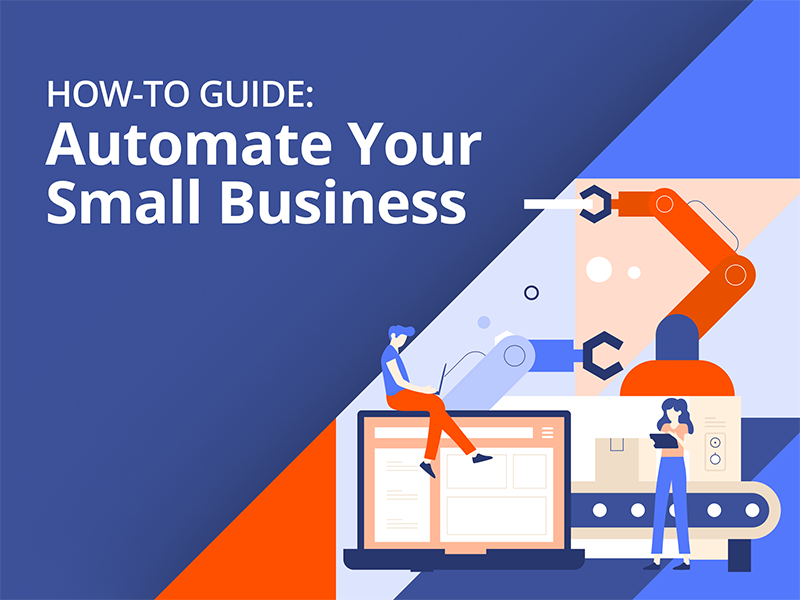Marketing has a natural maturity curve. Remember when you actually used to read all of your emails? Or when Google produced more organic answers than paid ads?
The next major marketing trend is AI. It has entered the mainstream and is widely available for those wanting to take advantage of it (as you’ll see – technical expertise isn’t required). AI is the latest technology that will surely evolve, just as voice search, paid ads, and social media did after their arrival.

AI marketing has the potential to be a game-changer for small businesses. As it becomes more commonplace, small business owners will benefit from how it can optimize their marketing campaigns – gaining a competitive advantage in their fields as a result.
Let’s have a closer look at some of the most popular AI marketing trends for 2024 to see how you can implement this technology at your business.
8 AI Marketing Trends for 2024
Your prospects flow through what we think of as a three-part funnel. In the “awareness” part, they discover your business as a solution to a problem, or become aware of it – hence the name. That’s the top of the funnel.
Then, in “consideration,” they compare and consider – see it now? – your prices and services to others. That’s the middle of the funnel.
Finally, at “conversion,” at the bottom of the funnel, they’re ready to open their wallets – or convert from prospects to customers.

Let’s look at a few ways AI can significantly improve how prospects move through this funnel.
1. AI analyzes consumer behavior to build innovative campaigns.
In marketing, it’s our job to anticipate where consumers spend time during the awareness stage and where they’re more likely to discover our brand – like Facebook ads, Google searches, social media scrolling, connected TV, etc.
The first AI marketing trend is about understanding consumer data and behavior. AI excels at analyzing tremendous amounts of information and making real-time recommendations with machine learning. AI can recommend where and how to place your ads — including the most effective channels, placements, and formats for a business to reach its target audience.

For example, let’s say “Paul’s Plumbing” used an online ads platform with AI analysis to test three ad concepts for a tankless water heater. The ads used various colors, images, and text. Using this platform, he learned his ads appealed to 18-to 29-year-old men who make up to $24,000 annually.
The platform also determined that ad No. 1 was the most memorable, No. 2 was the most unique, and No. 3 would drive the most sales.
Based on this analysis, if Paul was looking for top-of-funnel awareness, he should keep running ad No. 1. But if he’s looking for bottom-of-funnel conversions and a bump in sales, ad No. 3 is the clear winner. Talk about using meaningful data to get a leg up on the competition!
2. AI automates workflows, improving communication and efficiency.
As a small business owner, productivity and resources are your biggest challenges when producing marketing campaigns. Most businesses understand the importance of marketing, but they struggle to balance it with other day-to-day tasks. AI can automate simpler marketing tasks so you don’t need to manually send emails or reach out to interested customers.
Email follow-up is a common example. When someone fills out a form on your website, you can use an AI automation platform to trigger a follow-up email. The email is pre-written and sent once the form is complete, so you don’t have to do a thing.
Once properly set up, AI automation is remarkably consistent. You won’t miss a follow-up email or forget to contact a customer, because AI does it for you – every single time.
Automation like this can revolutionize your business. It’s almost like turning one employee into several by reducing tedious tasks and freeing up space to work on time-sensitive or complicated issues.
3. Generative AI creates content for different channels and moments.
Generative AI is effective at various stages of the marketing funnel. It focuses on creating content like images, audio, or text, and generates these assets based on the data it can access.
Why is that important?
Consider a small business like “A/C by Cal” that wants to create an email campaign encouraging existing customers to upgrade to a premium maintenance service. Cal inputs the topic and goal into a generative AI tool – I used ChatGPT below – and the platform provides the written content.

In this example, ChatGPT wrote three subject lines and an email in less than a minute. The message highlighted the benefits of becoming a premium customer, including extended warranty, peace of mind, personalized service, and more. It also suggested ways to improve the email, such as personalizing it and adding calls to action.
Imagine how this would work throughout the rest of your customer’s journey. AI can analyze large amounts of customer data, identify patterns, and generate insights. Businesses can use it to pinpoint where customers are losing interest and identify ways to re-engage them and reinvigorate sales.
4. AI provides self-service resources to engage customers.
A self-service resource is a document or tool that customers use to get help from your business. It doesn’t require an employee from your company to assist. Rather, the customer finds their solution on their own.
AI has made this easier for any business. If your company has a website, you can build a knowledge base, which is like a blog for troubleshooting your product or service. Users look for solutions there, reducing the number of customer service calls for your business.

On social media, you can install a chatbot into your direct messages. These chatbots solve problems outright or gather information so you can follow up later.
You can install AI into your phone and voicemail system, too. If you’ve ever had to call a business, from your internet provider to your doctor’s office, you’ve probably interacted with an AI assistant asking you to speak a phrase or select a number from a list of options. That’s AI. It uses this information to solve problems or find the right person at your business to transfer the call.
The benefits of self-service are more accessibility and better customer experiences. Connecting with customers is more manageable, and you’re creating better experiences by improving your company’s support. That leads to happier buyers who return to your business for repeat purchases.

How-to Guide:
Automate Your Small
Business
Tools and processes to help streamline all of your business operations.
5. AI researches your audience and provides insights.
We’ve been discussing how AI algorithms analyze data for content creation, but it can also help you win your audience’s attention.
Once your prospects move down the funnel and become more familiar with your brand, they may sign up for an email newsletter or follow you on social media. Here’s where AI can make your connection more meaningful.

Get AI Insights With Marketing Center
Learn MoreWhen creating email campaigns, look for marketing tools that let you automate “predictive sending times.” AI features analyze when recipients are most likely to check their inboxes and open your emails, and deliver them accordingly.
Similarly, a social media scheduling tool will provide “optimal posting times” for a specific audience on your channels — be it Facebook, Instagram, or others — so your message is more likely to be seen when these users are active.
6. AI personalizes content for better conversion rates.
While AI predicts the best times to engage customers, it can also improve the effectiveness of your content. By personalizing it, AI tools make your messages more likely to resonate with your audience, increasing engagement and interactions with your campaign.
Email is a straightforward example here, too. We can use “tokens” to pull customer data from your CRM and input it into your email campaign. Rather than starting an email with “Dear Customer,” you can address them by their first name and utilize information you’ve obtained over time.

Additionally, AI can learn how your customers have interacted with your business and present content based on their preferences. For example, a “pixel” is an AI feature that follows a customer as they visit your website. Thanks to that pixel, the next time that customer visits Facebook, they will see an ad for a service they researched on your site.
It’s important to note that these features are optional for customers. Ask them to opt in using a form (like this one) that confirms they consent to this type of tracking.
7. AI marketing gives you more opportunities to advertise for free.
One of AI’s biggest advantages is accessibility. The creators of ChatGPT used to publish their code and projects publicly, meaning developers could build similar products.
Now, plenty of free AI tools, in addition to ChatGPT, are available for marketing purposes. Canva has an image generator that builds custom graphics for your website. Steve.ai records animated videos that you can post on social media. And Whisper is a voiceover tool you can use to create podcasts.

These products show us why it’s significant that ChatGPT shared its code. Since plenty of developers can access it, these tools will improve, and more features will follow. That means business owners will have more technology to leverage (for free) to market their business.
AI Marketing for Small Business
From smarter campaigns to consumer insights to predictive analytics, it’s clear that AI offers a range of solutions and shortcuts, and we’re just beginning to understand its power.
Remember that machine learning and content creation can be robotic and generic. Prioritize personalization and connection in the process. While AI-written content is convenient, make sure it’s tailored to your brand and sounds like your business.
AI may not capture your business’s personality and tone of voice (yet), so remember that while machines make our jobs easier, our personal connections build lasting relationships and meaningful experiences for our customers.

How-to Guide:
Automate Your Small
Business
Tools and processes to help streamline all of your business operations.







